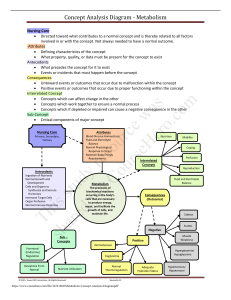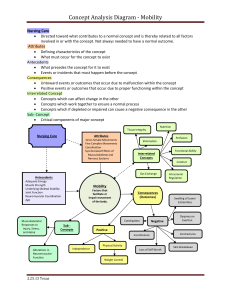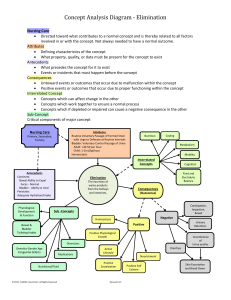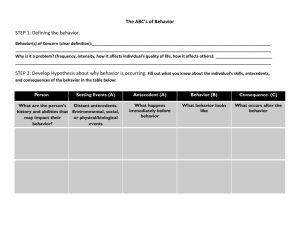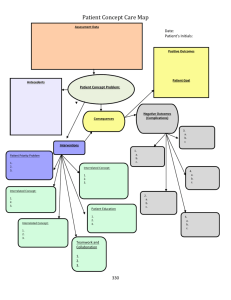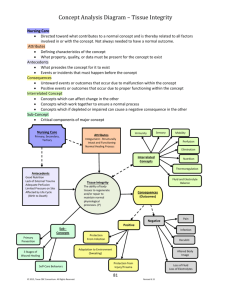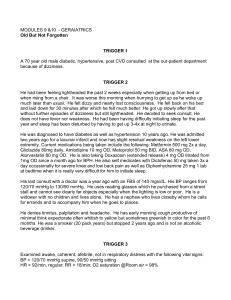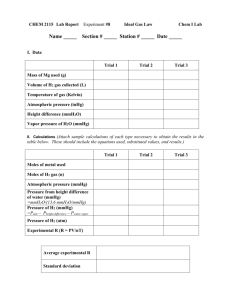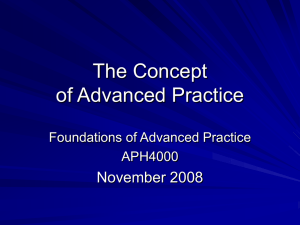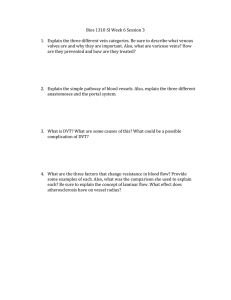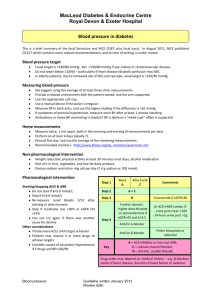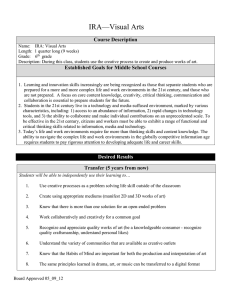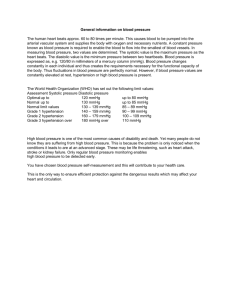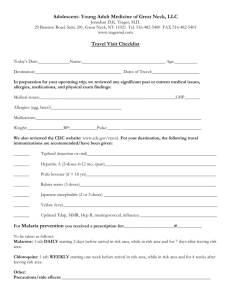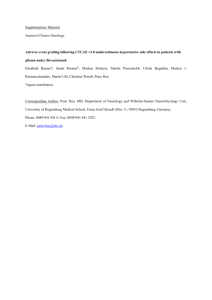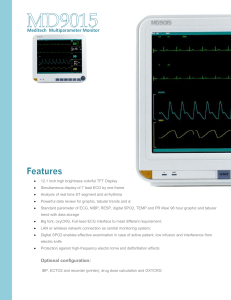Concept Analysis Diagram * Acid Base Balance
advertisement
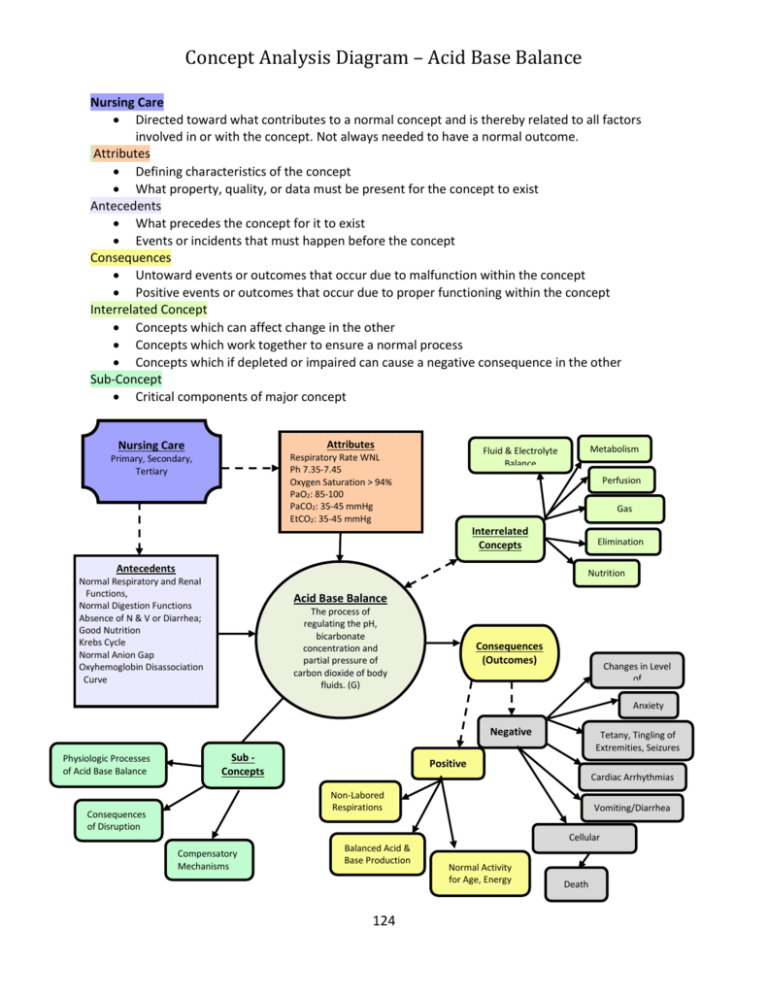
Concept Analysis Diagram – Acid Base Balance Nursing Care Directed toward what contributes to a normal concept and is thereby related to all factors involved in or with the concept. Not always needed to have a normal outcome. Attributes Defining characteristics of the concept What property, quality, or data must be present for the concept to exist Antecedents What precedes the concept for it to exist Events or incidents that must happen before the concept Consequences Untoward events or outcomes that occur due to malfunction within the concept Positive events or outcomes that occur due to proper functioning within the concept Interrelated Concept Concepts which can affect change in the other Concepts which work together to ensure a normal process Concepts which if depleted or impaired can cause a negative consequence in the other Sub-Concept Critical components of major concept Attributes Nursing Care Metabolism Fluid & Electrolyte Balance Respiratory Rate WNL Ph 7.35-7.45 Oxygen Saturation > 94% PaO2: 85-100 PaCO2: 35-45 mmHg EtCO2: 35-45 mmHg Primary, Secondary, Tertiary Perfusion Gas Exchange Interrelated Concepts Antecedents Elimination Nutrition Normal Respiratory and Renal Functions, Normal Digestion Functions Absence of N & V or Diarrhea; Good Nutrition Krebs Cycle Normal Anion Gap Oxyhemoglobin Disassociation Curve Acid Base Balance The process of regulating the pH, bicarbonate concentration and partial pressure of carbon dioxide of body fluids. (G) Consequences (Outcomes) Changes in Level of Consciousness Anxiety Negative Physiologic Processes of Acid Base Balance Sub Concepts Tetany, Tingling of Extremities, Seizures Positive Cardiac Arrhythmias Non-Labored Respirations Consequences of Disruption Compensatory Mechanisms Balanced Acid & Base Production 124 Vomiting/Diarrhea Cellular Destruction Normal Activity for Age, Energy Death

